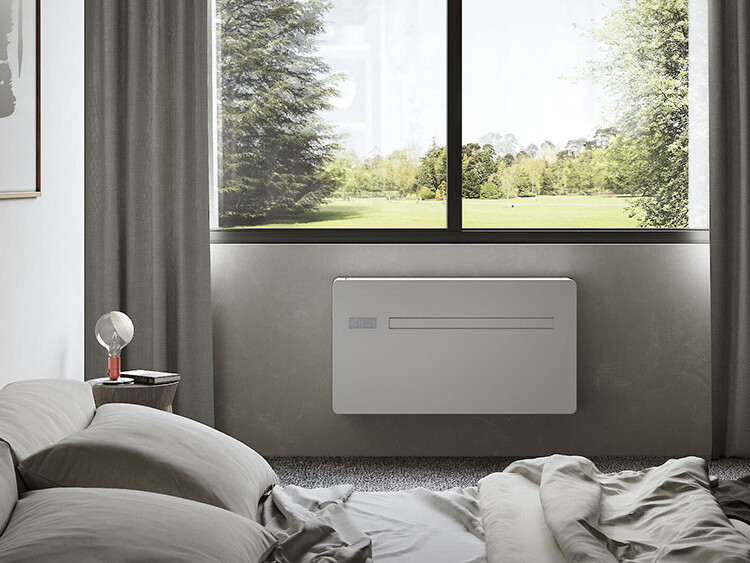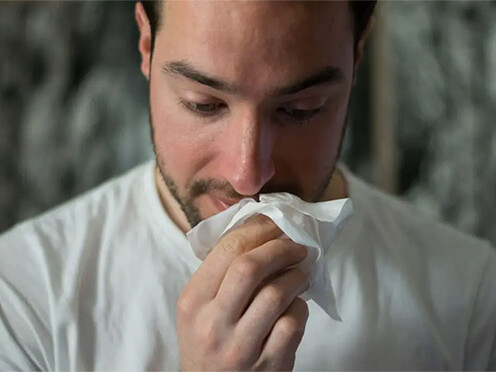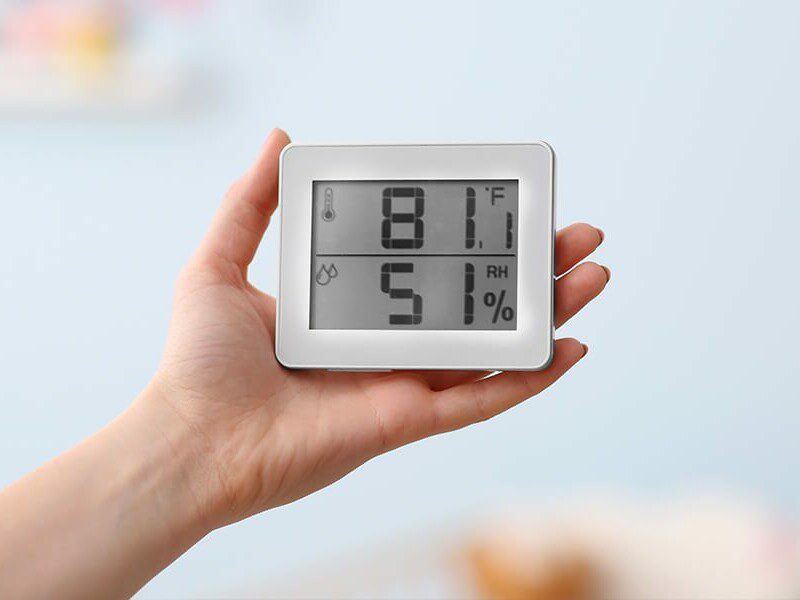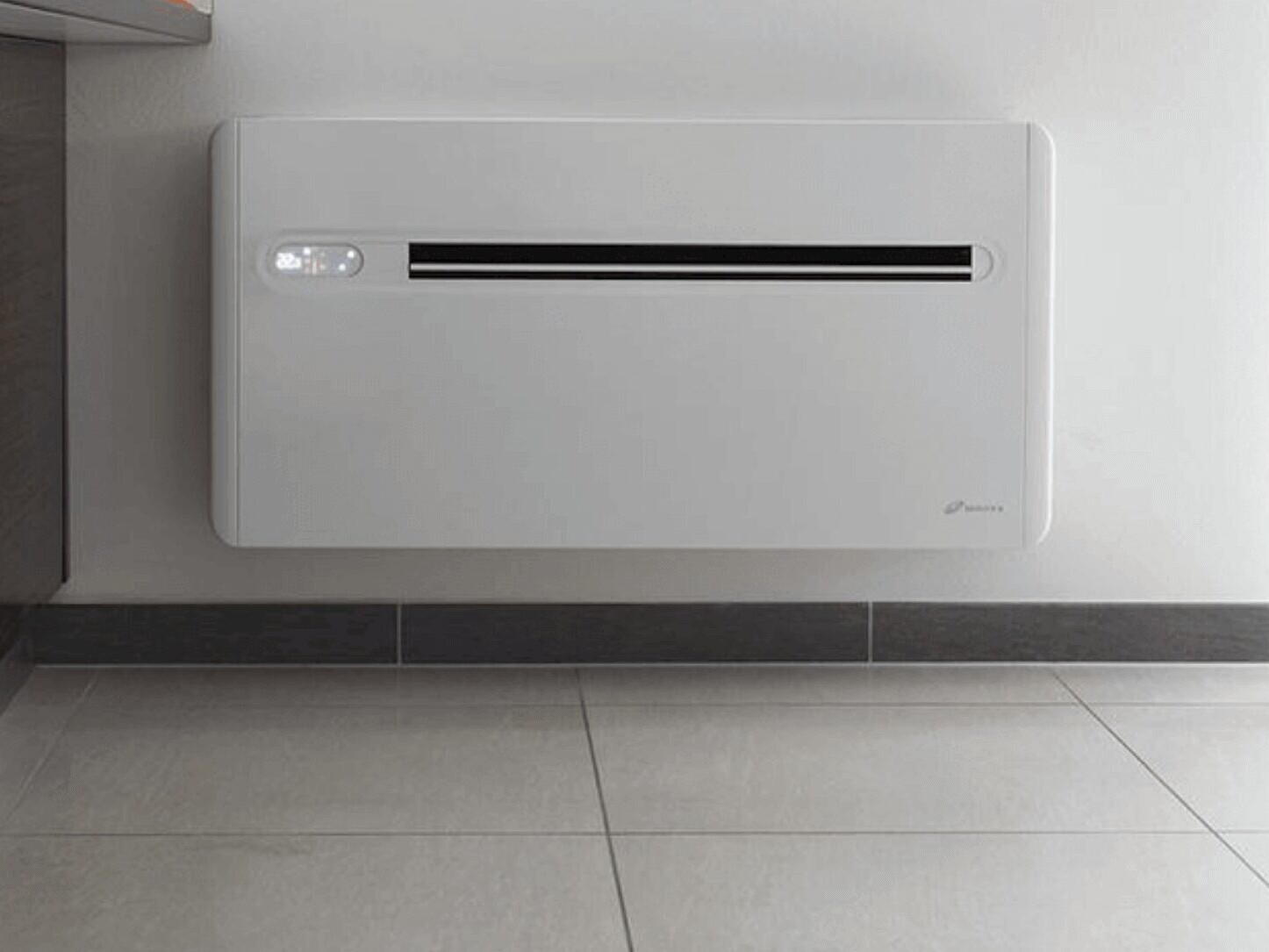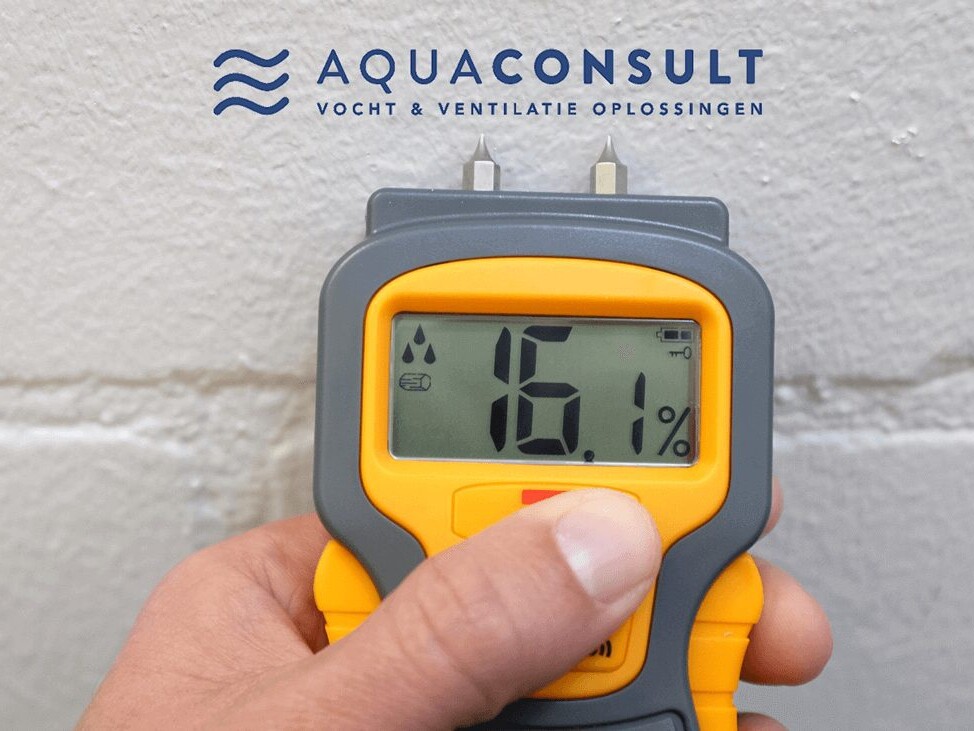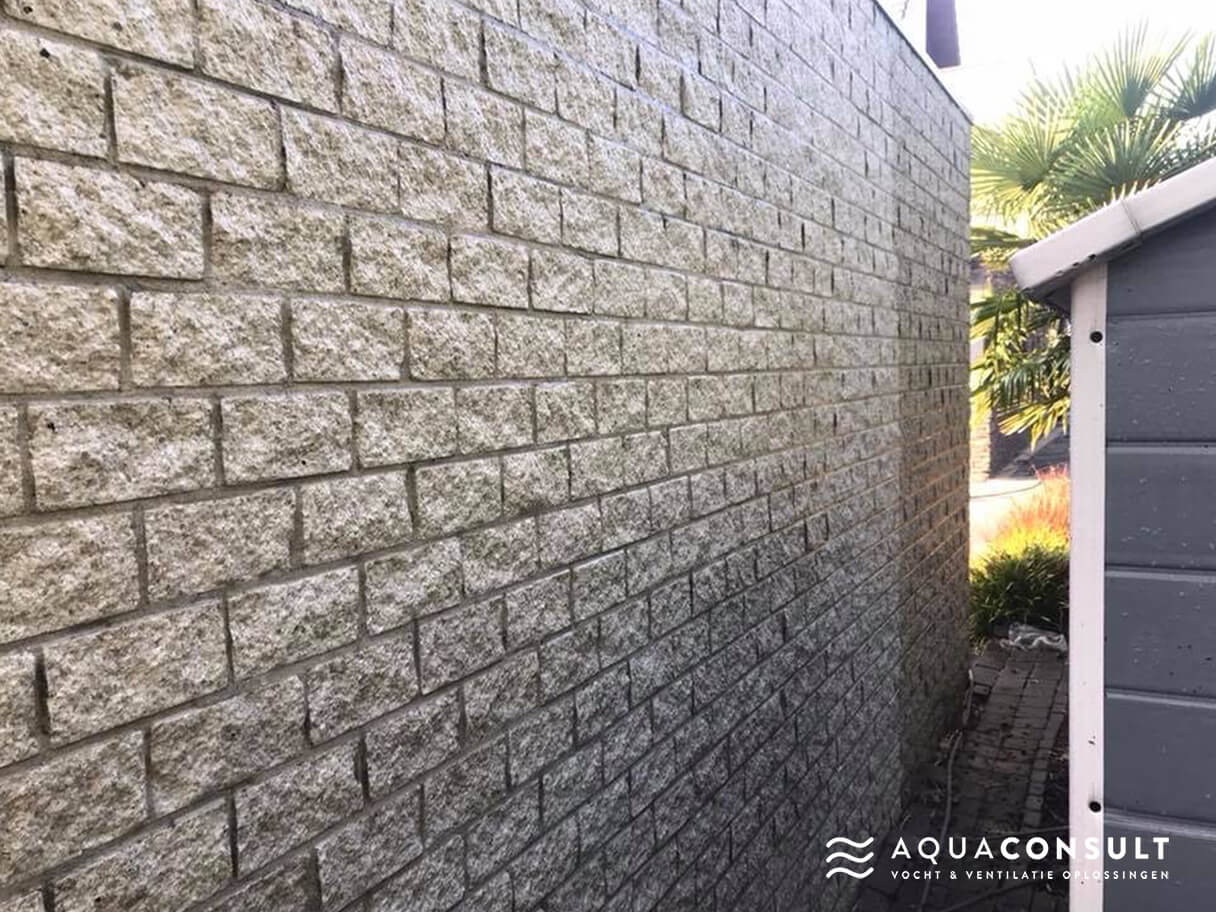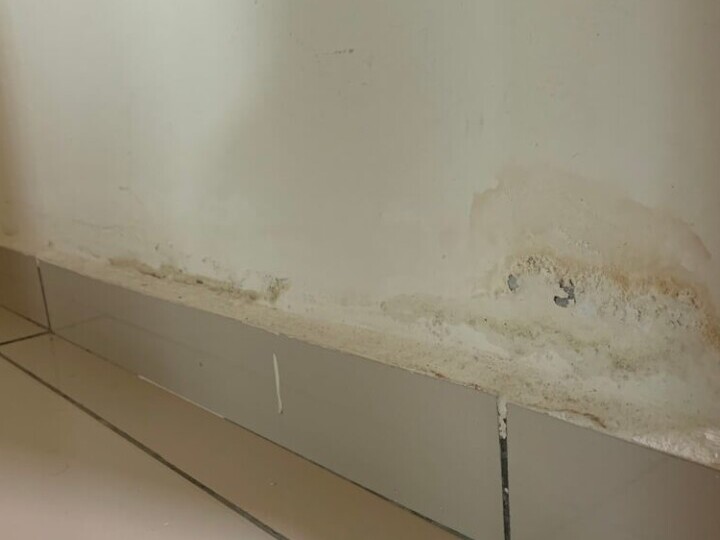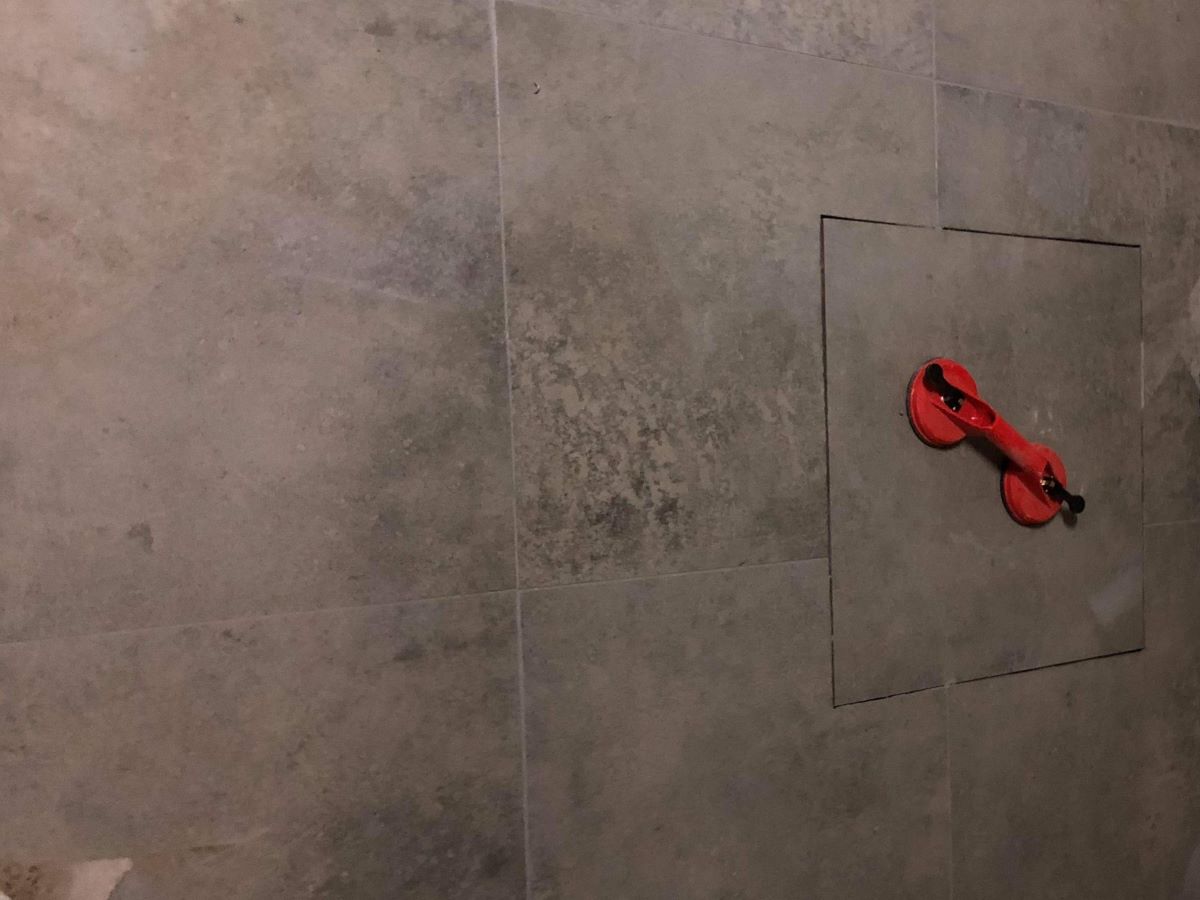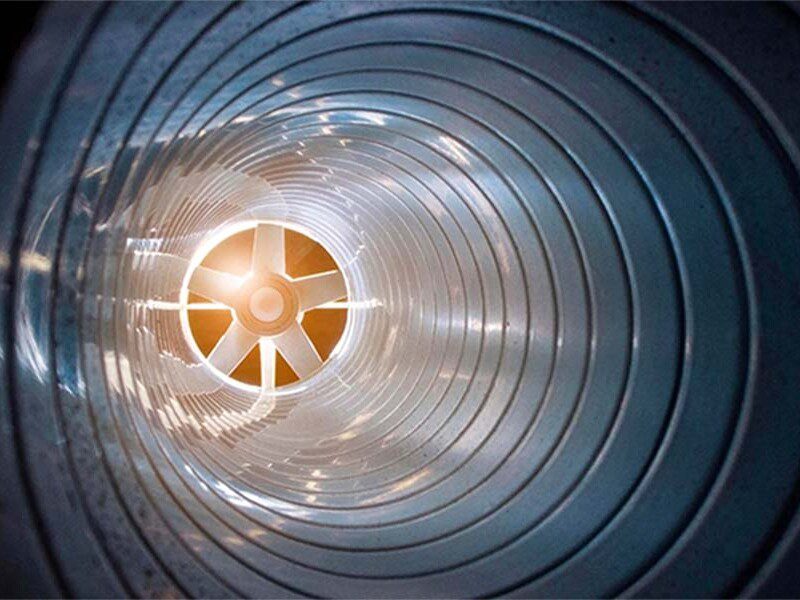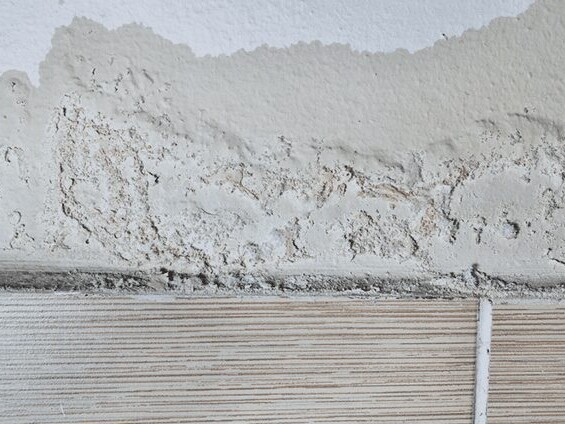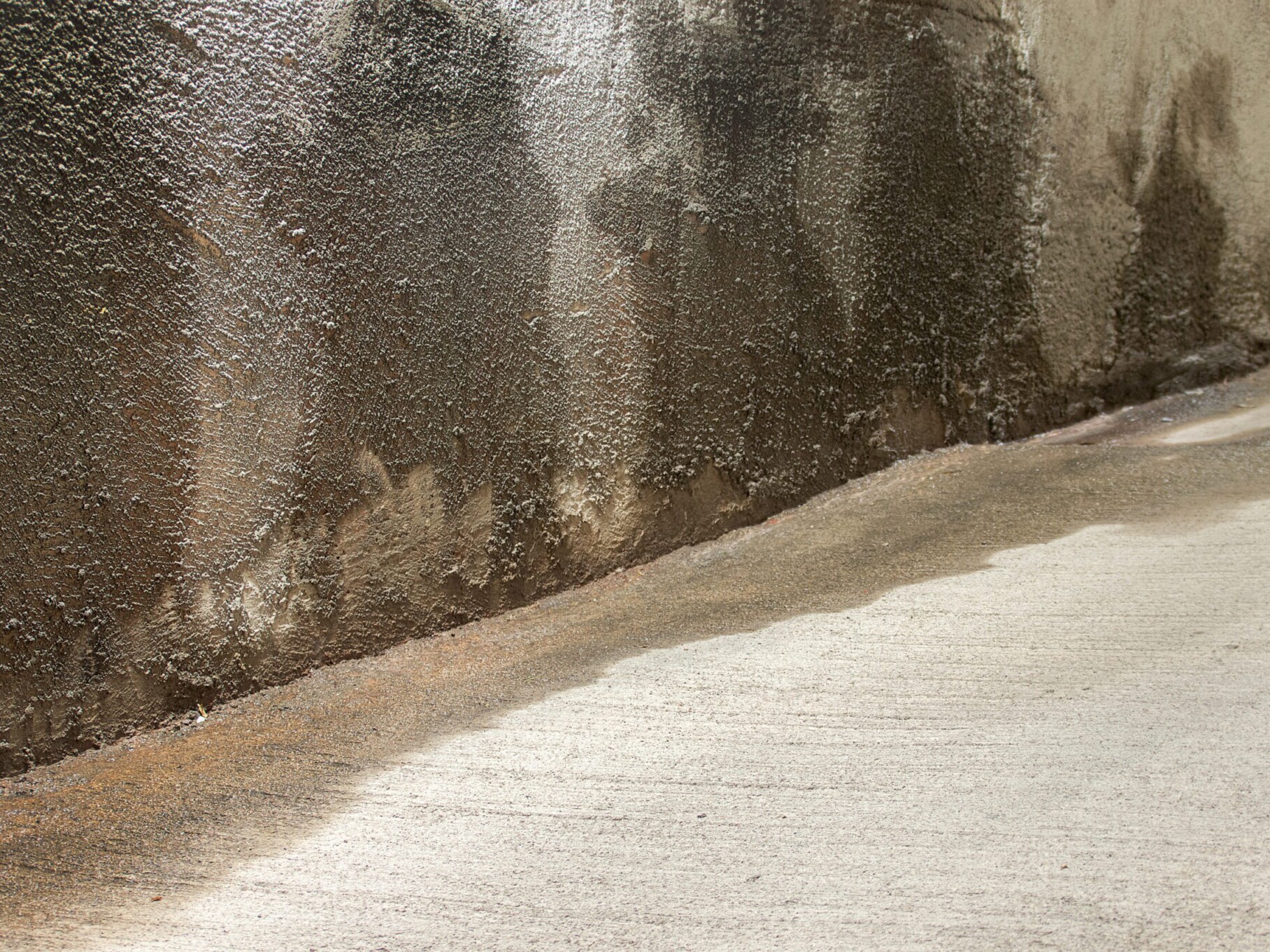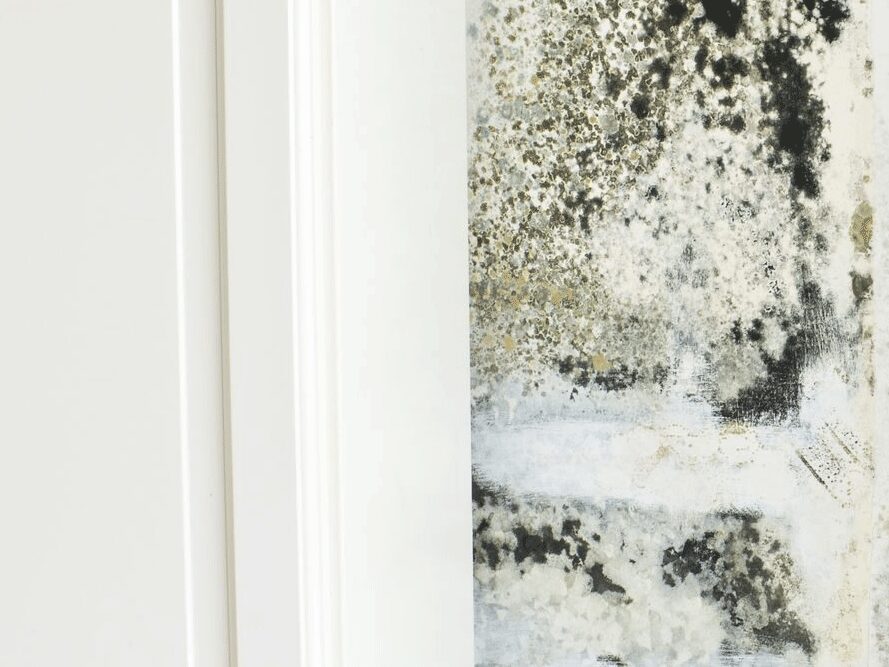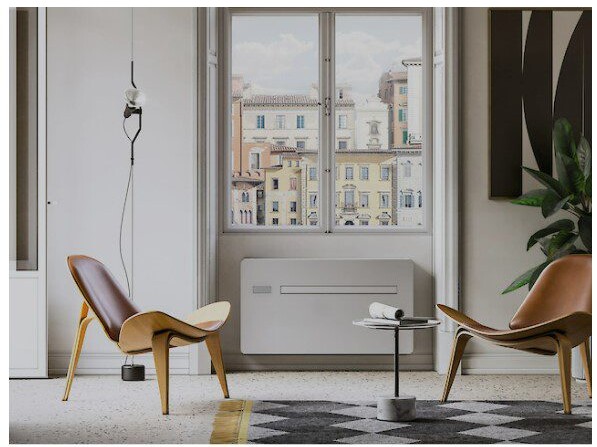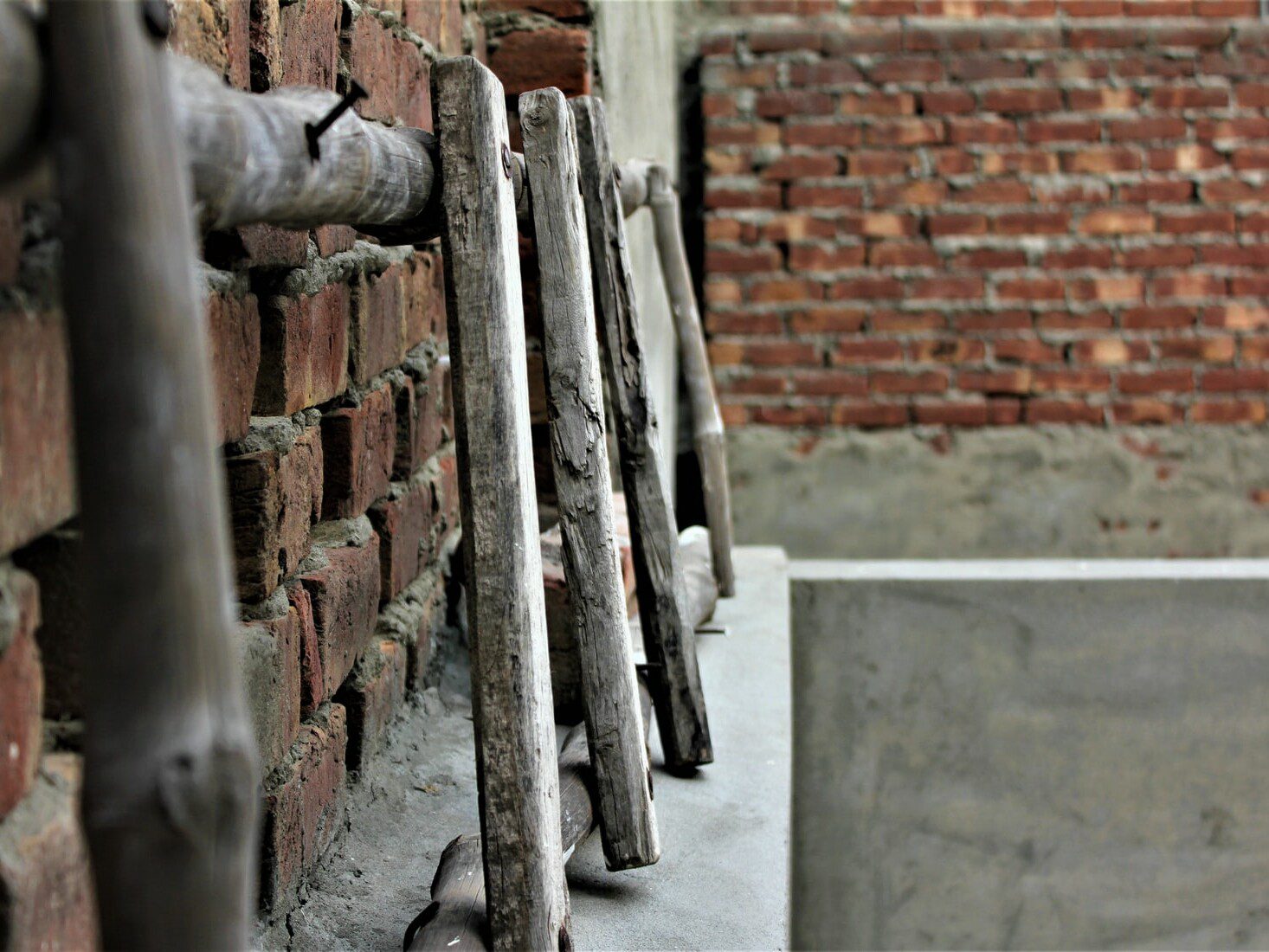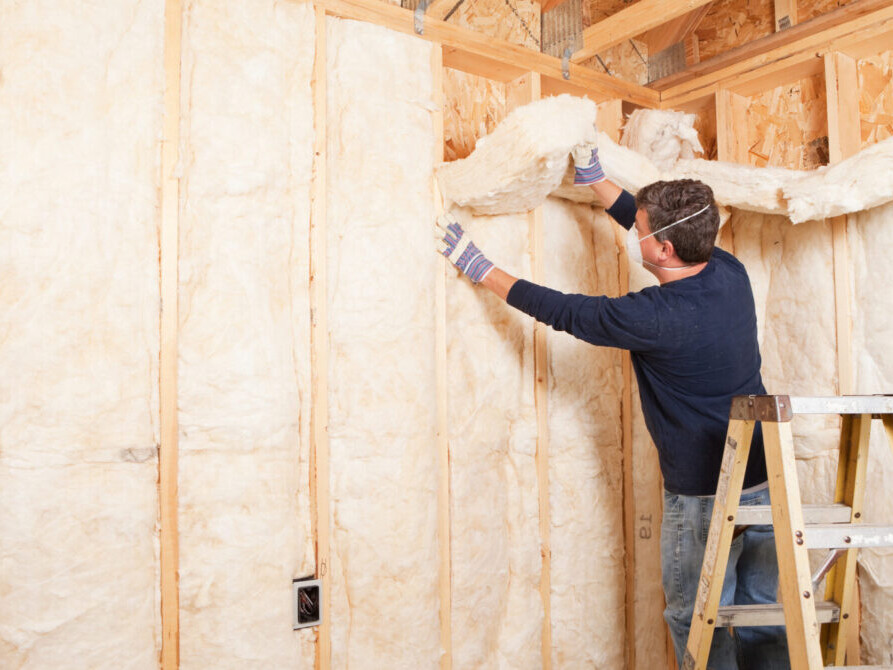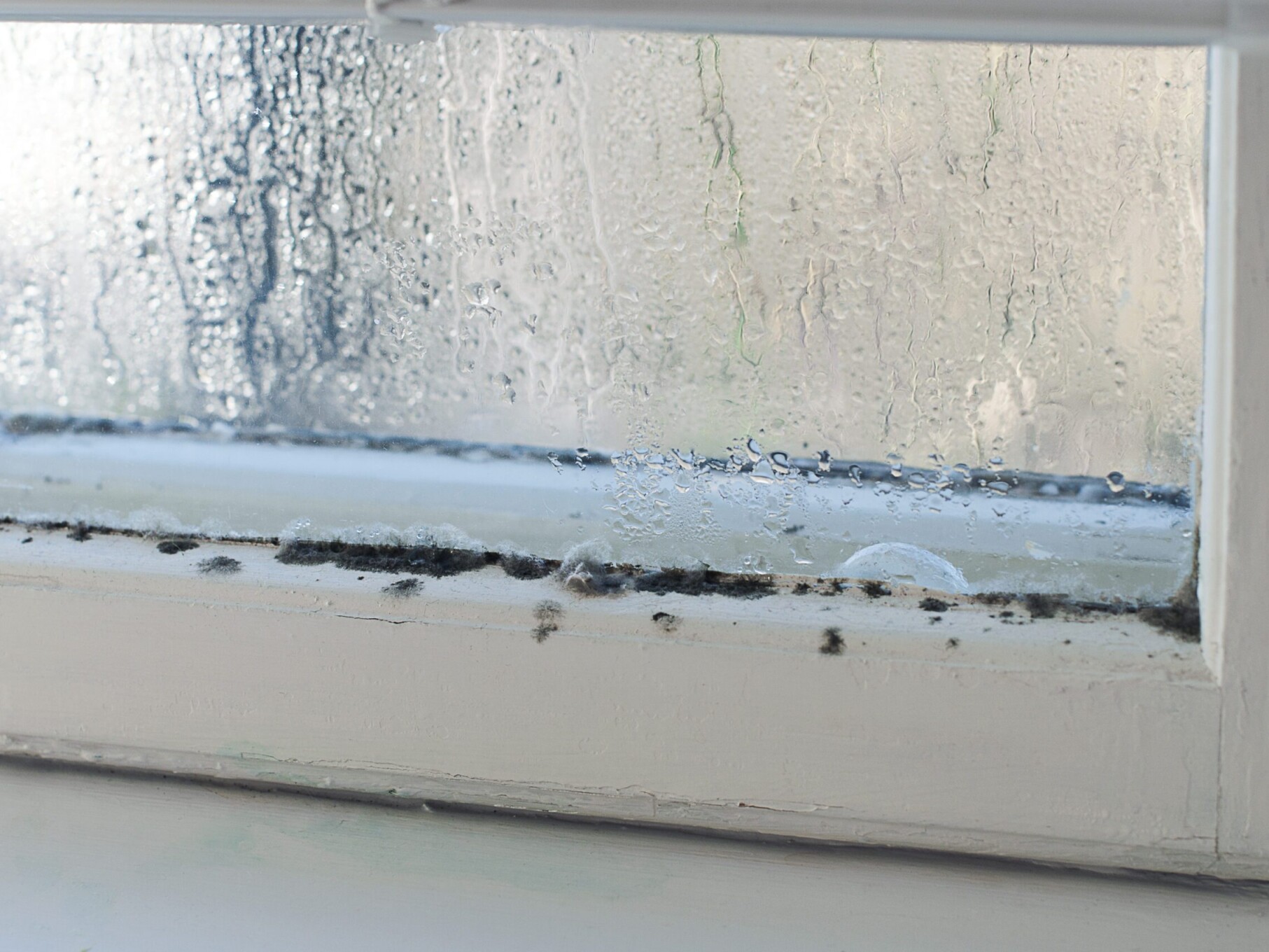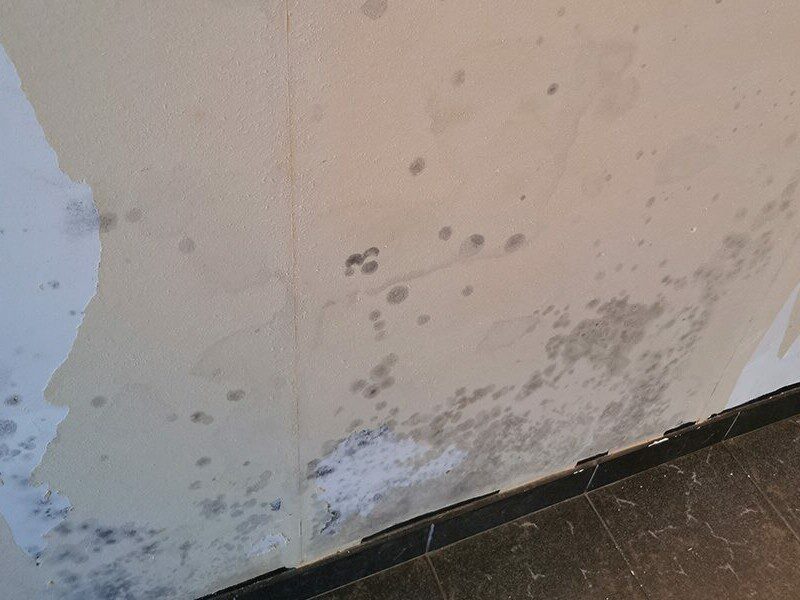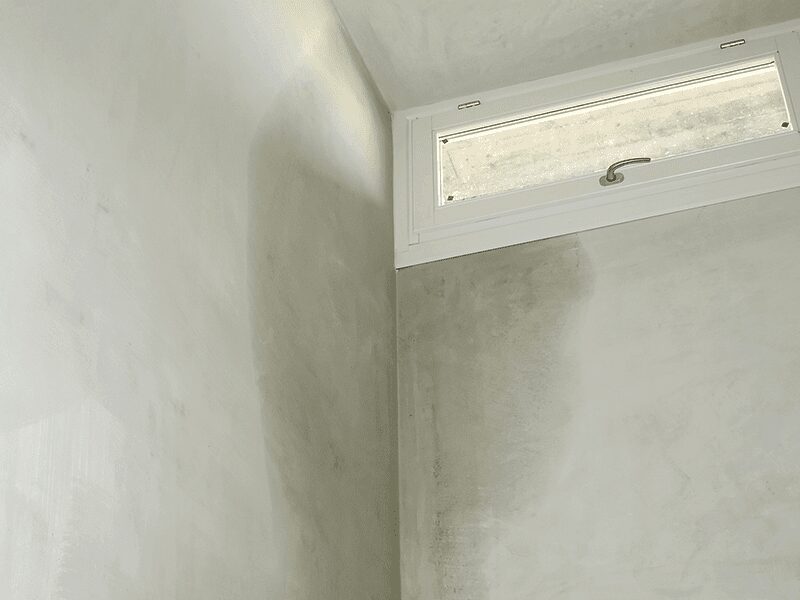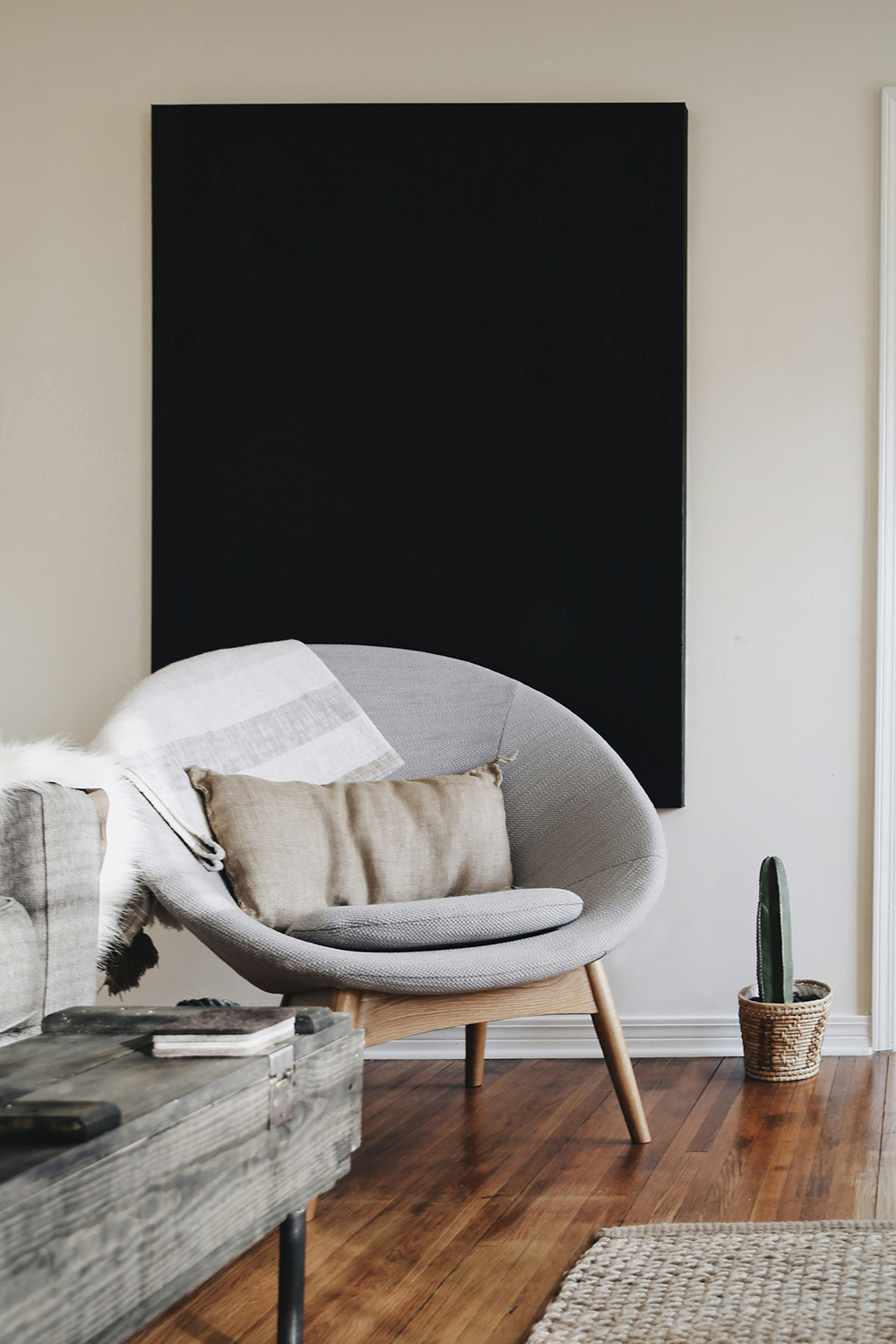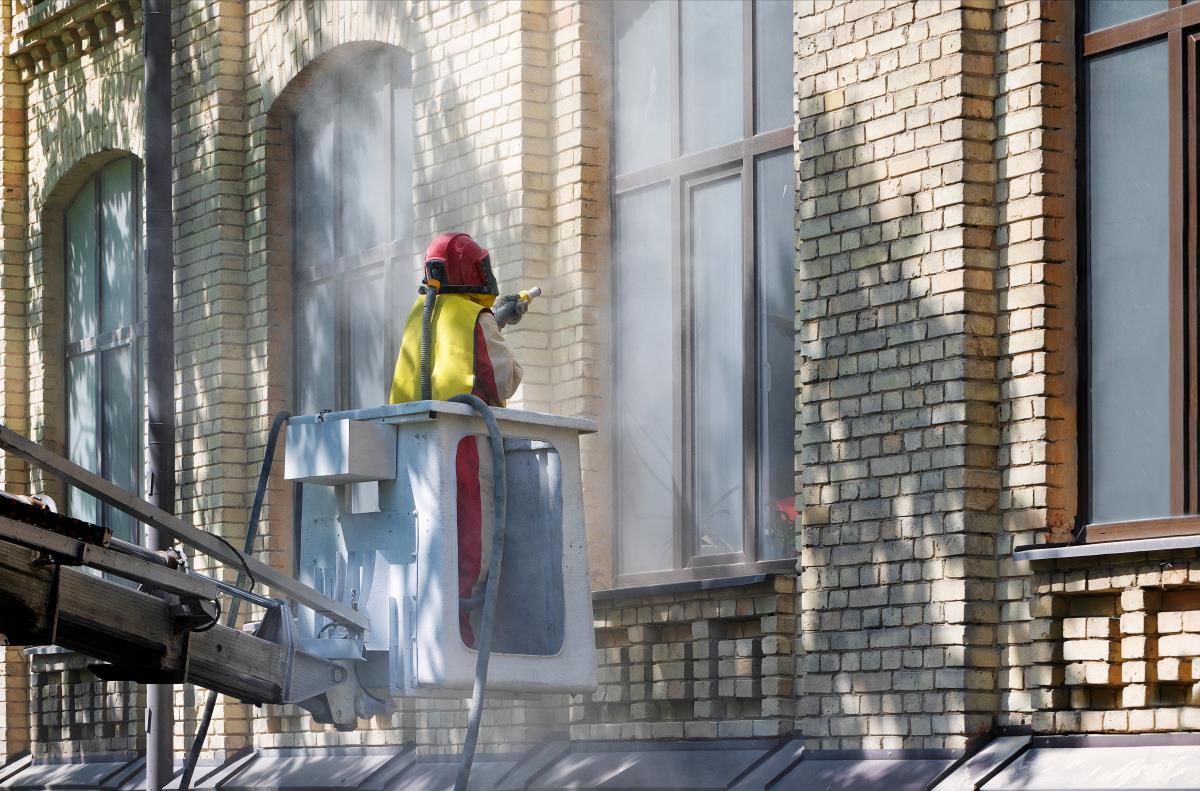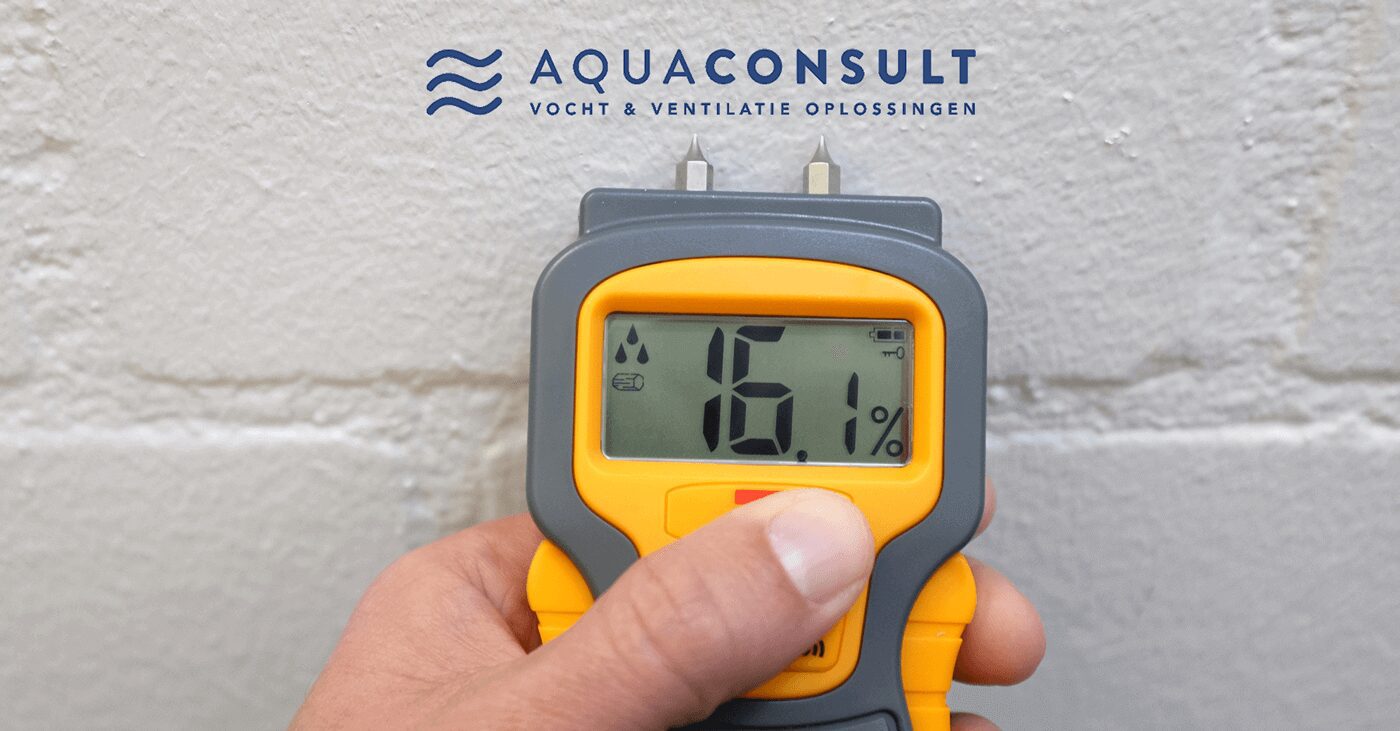Why wet basements are rising sharply in Flanders (Radio 1 interview)
Why wet basements are rising sharply in Flanders: interview with Radio 1
We can say with certainty that 2024 will be one of the wettest years ever recorded. After a wet winter and spring, the rainy summer ensures that groundwater levels remain as high as ever. As a result, more and more Flemish homes are struggling with wet basements and the associated problems. A trend that will not change any time soon.
Luc Lambrechts, our business manager and expert in moisture problems and control, explained more about this in an interview with Radio 1. During the talk, he emphasized how this year's exceptional weather conditions have had a major impact on the number of moisture control requests.
Listen to the conversation here:
The exponential growth of moisture problems and wet basements in Flanders
We already received a lot of rain this year. Both the winter and spring were exceptionally wet, and despite hopes for a sunny, dry summer, the summer rainfall also persisted. This abundant rainfall and the resulting high water levels lead to moisture problems. As Luc Lambrechts explained in the Radio 1 interview, rising and leaking moisture cause damp walls and wet cellars, while the lack of adequate ventilation promotes the growth of mold and other undesirable effects. Even during summer months.
At AquaConsult, we noticed that older homes with metered basements in particular suffer from moisture problems such as wet basements. Luc also pointed out that in new houses (by which we mean houses that are less than 10 years old) mold problems are often due to construction defects. This underscores how important it is to build properly from the beginning and ventilate.
Effective management of wet basements and moisture problems
Wet basements and other moisture problems can lead to significant negative consequences. Luc emphasized in the interview that it is essential to address these problems in a timely manner, as the consequences often go beyond moisture and mold growth.
Preventive measures are limited; installing a concrete basement during construction and ensuring adequate ventilation are the most important steps you can take.
As Luc pointed out, attempts to find solutions on your own can often be ineffective and costly, without achieving the desired result. In many cases, therefore, it is advisable to opt for professional ponding, although the appropriate solution depends on the exact moisture problem you are facing.
Suffering from moisture in your home?
Are you also struggling with a wet basement or other moisture problem? Then you are far from being the only one. Let AquaConsult assist you. Contact us now and our experts will be happy to help you.
Tackle hay fever with ionization
01/08/2024
Is moisture bad for your health?
26/07/2024
26/07/2024
What is the technical ATG approval?
23/07/2024
What is floor drainage in the basement?
23/07/2024
Four ways to prevent mold in your home
16/07/2024
How can I waterproof my basement again?
16/07/2024
AquaConsult's expertise in the media
23/01/2024
Is black mold dangerous to your health?
22/09/2022
31/08/2021
Suffering from infiltrating moisture?
23/10/2014
Request more information and brochure
Answer the questions below and get more information and our brochure based on them. Would you like to have the cost calculated? Then indicate this clearly in the text field below and we will do the necessary.


Air conditioners without an outdoor unit: everything you want to know
Air conditioners without an outdoor unit: everything you want to know
An air conditioner without an outdoor unit - also known as a monoblock air conditioner - has many advantages. Aquaconsult is happy to explain exactly what a monoblock air conditioner is and why you should choose one.
What are the advantages of an air conditioner without an outdoor unit?
There are several advantages to an air conditioner without an outdoor unit in general; and the Innova Monoblock in particular.
Also, can you use the air conditioner without an outdoor unit as a heater in winter as well?
Yes, you can. The Innova Monoblock air conditioner works with a heat pump. That means this air conditioner can both cool a room and heat a room.
How does a heat pump air conditioner work?
Although the name doesn't suggest it, a heat pump doesn't just allow you to heat a room. Air conditioners also use this system to cool a room.
Want to cool the room? Then a heat pump pulls heat out of the room to cool it down inside and then releases it back. Do you want to heat up the room? Then the opposite happens. The Innova Monoblock Air Conditioning works with this system.
Where is best to place an air conditioner without an outdoor unit?
A typical place to place a monoblock air conditioner is the bedroom. Especially when we have a hot summer, an air conditioner in the bedroom is not a luxury. The advantage to the Innova Monoblock, is that it does not take up much space. So it is perfect to place in the bedroom.
In addition to the bedroom, the living room is always a good idea. After all, the living room is - usually - the room you spend the most time in. A refreshing living room in the summer, or a cozy warm living room in the winter is no luxury.
Can I install an air conditioner without an outdoor unit myself?
It is certainly possible to install an air conditioner without an outdoor unit yourself. Buy an air conditioner through Aquaconsult and want to install it yourself? Then you get all the information in a manual where everything is clearly explained.
How much does an air conditioner without an outdoor unit cost?
Innova Monoblock Air Conditioners Cost. between 1,725 euros and 2,534.95 euros, VAT included. The price depends on the model and whether you install the air conditioner yourself or have it installed. With those prices, Aquaconsult is the very cheapest. We guarantee you that.
Looking for an energy-efficient and effective air conditioner?
Are you looking for an air conditioner without an outdoor unit? Contact Aquaconsult now for more information or check out our offer at aeroconsult.be.
Tackle hay fever with ionization
01/08/2024
Is moisture bad for your health?
26/07/2024
26/07/2024
What is the technical ATG approval?
23/07/2024
What is floor drainage in the basement?
23/07/2024
Four ways to prevent mold in your home
16/07/2024
How can I waterproof my basement again?
16/07/2024
AquaConsult's expertise in the media
23/01/2024
Is black mold dangerous to your health?
22/09/2022
31/08/2021
Suffering from infiltrating moisture?
23/10/2014
Request more information and brochure
Answer the questions below and get more information and our brochure based on them. Would you like to have the cost calculated? Then indicate this clearly in the text field below and we will do the necessary.


Tackle hay fever with ionization
Tackle hay fever with ionization
Hay fever. It's a necessary evil that a lot of people have to go through once the sun comes out. Usually hay fever is worst outdoors, but it can also affect you inside your home or office. But did you know that there is a way to tackle hay fever in indoor spaces? Namely, with an air purifier. How does an air purifier keep your home free of hay fever and, by extension, allergies? AquaConsult explains it briefly for you.
What exactly is hay fever?
Before we can explain to you how AquaConsult tackles hay fever, it's important to know exactly what hay fever is. Hay fever is one of the most common allergies and is also called pollen or pollen allergy. Here are some preliminary facts about this annoying allergy:
And the number of pollen grains is always rising. For example, in the year 2022, a record number of pollen grains was measured in 40 years: 433 pollen grains per square meter. You already get symptoms at 50 grains of pollen per square meter. According to health institute Sciensano the hay fever season will change because of climate disruption: the hay fever season will start earlier, last longer and there will be more pollen in the air. Not pleasant, in other words.
What is the best thing to do about hay fever?
It is not always possible to block pollen or pollen grains. When you move outdoors, you can control the hay fever radar check or take targeted medication, but usually your options end there.
Indoors, however, there are more options. For example, an air purifier can effectively reduce hay fever and its symptoms. A particularly effective type of air purifier for this purpose is the ionizer. This device is specifically designed to purify indoor air through ionization technology, which rids the air of unwanted microparticles. These microparticles include viruses, allergens, particulate matter, as well as pollen and pollen particles. This air purification technology can be integrated into your air conditioning or balance ventilation system, instantly purifying the air as you ventilate and cool it.
Our sister company AeroConsult specializes in air purification and ionization. With their systems, we make sure that your airways can actually rest at home. So you recover better, sleep well and can breathe deeply in and out with relief.
How does ionization work in an air purifier for hay fever?
So ionization purifies the air of anything that can bother you. You can no longer breathe in the pollen or pollen particles so you no longer suffer from the symptoms. But how exactly does ionization work?
That ionization really works is scientifically proven. Moreover, the GPS technology used in AeroConsult's systems is the only air purification system approved for use in aviation and ionization is the only system that does not create ozone while purifying the air. Perfect for use in both residential buildings and larger buildings such as offices or schools.
Ionization is installed in your air conditioner or balance ventilation using an ionization strip or an ionization system. It is very low maintenance and it consumes much less energy than other air purification systems.
Air purifier with ionizer for better sleep
Symptoms of hay fever can get worse at night. Even then, an air purifier with ionization is good for hay fever. This is because the air purifier improves the air quality. Because you lie in a room where the air is purified and free of allergens, you sleep better. Since you obviously do not want to be disturbed, it is important that the air purifier does not make more than 30 decibels of noise or that it has a special night mode.
Want to install an air purifier with ionization system at your home or in a public space? If so, please contact AquaConsult and our experts will be happy to help you. It is also possible to contact us via AeroConsult's webshop purchase an ionization strip for air conditioners or an ionization system for balance ventilators.
Where can I get such an air-cleaning ionization system?
Want to install an air purifier with ionization system at your home or in a public space? Then contact AquaConsult and our experts will be happy to help you. It is also possible to purchase an ionization strip for air conditioners or an ionization system for balance ventilation through AeroConsult's webshop.
Tackle hay fever with ionization
01/08/2024
Is moisture bad for your health?
26/07/2024
26/07/2024
What is the technical ATG approval?
23/07/2024
What is floor drainage in the basement?
23/07/2024
Four ways to prevent mold in your home
16/07/2024
How can I waterproof my basement again?
16/07/2024
AquaConsult's expertise in the media
23/01/2024
Is black mold dangerous to your health?
22/09/2022
31/08/2021
Suffering from infiltrating moisture?
23/10/2014
Request more information and brochure
Answer the questions below and get more information and our brochure based on them. Would you like to have the cost calculated? Then indicate this clearly in the text field below and we will do the necessary.


Moisture-resistant paint: everything you need to know
Moisture-resistant paint: everything you need to know
Damp-proof paint is a special type of paint designed to protect your walls from moisture. In this article you will discover the benefits, applications and different types of damp-proof paint, as well as practical tips on how to apply it.
What is moisture-resistant paint?
moisture-resistant paint, as the name implies, is a type of paint specifically designed to repel moisture. This type of paint usually contains a water-repellent compound. This ensures that after the paint dries properly, a barrier is created between the paint and moisture. This prevents moisture from penetrating the walls.
With the naked eye, you often don't notice the difference from ordinary wall paint. Yet it has a number of additional advantages:
When do you need moisture-resistant paint?
Damp-proof paint is a useful tool in many different situations, but not all of them. We explain when damp-proof paint is a good idea:
Note: damp-proof paint is not a quick fix or magic solution. For example, when you have a moisture spot experienced on a wall, painting it over is usually not an appropriate or final solution. The moisture will simply return over time. Worse, the problem may just get worse. Therefore, we recommend that you first determine the actual cause of the moisture, and find the best fitting moisture solution apply. When doing so, do not hesitate to hire a moisture expert, as this will guarantee the best treatment.
The types of moisture-resistant paint
Is damp-proof paint right for your situation? Then, broadly speaking, you have two options. Namely, we broadly distinguish between two types of damp-proof paint:
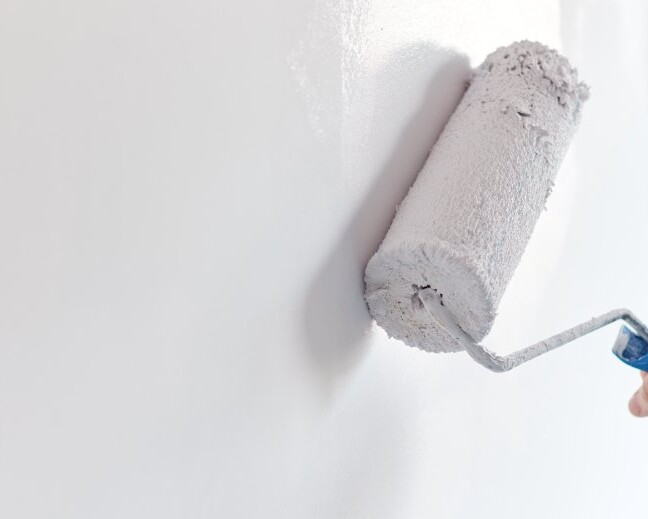
Which moisture-resistant paint should you choose?
There are plenty of alternatives on the market. Which moisture-resistant paint you best choose depends on the situation. Get advice on this from a expert. Our moisture experts already recommend the moisture-resistant Tensiocoat from Rewah NV. We have trusted this brand for a long time, also for injecting walls.
How do you apply moisture-resistant paint?
You have no underlying moisture problems (anymore), you know which walls you want to paint and you've chosen a moisture-resistant paint. You can finally start the real work! Typically, you (or a professional painter) will follow the following steps:
Suffering from moisture in the walls?
Are you suffering from moisture in your home? Then don't delay and request your free expertise. Our moisture experts will be happy to visit you.
Tackle hay fever with ionization
01/08/2024
Is moisture bad for your health?
26/07/2024
26/07/2024
What is the technical ATG approval?
23/07/2024
What is floor drainage in the basement?
23/07/2024
Four ways to prevent mold in your home
16/07/2024
How can I waterproof my basement again?
16/07/2024
AquaConsult's expertise in the media
23/01/2024
Is black mold dangerous to your health?
22/09/2022
31/08/2021
Suffering from infiltrating moisture?
23/10/2014
Request more information and brochure
Answer the questions below and get more information and our brochure based on them. Would you like to have the cost calculated? Then indicate this clearly in the text field below and we will do the necessary.


Do you suffer from sick building syndrome?
Do you suffer from sick building syndrome?
It is common knowledge that spending long periods of time in a home that does not meet safety and quality standards can lead to health issues. But did you know there is a name for this? It's called the sick building syndrome. In this article, we will tell you how to recognize this phenomenon, and how to avoid the unpleasant consequences of this syndrome.
What is sick building syndrome?
The name kind of gives it away: sick building syndrome is a term used in situations where occupants or users of a building suddenly find themselves with all kinds of health complaints that are due to nothing but the building. In other words, just by being in the building, residents get sick.
The term was created by the World Health Organization, which released a research report in the 1980s with some curious results. Namely, they found that 30% of all newly built and renovated homes make residents sick. In doing so, they made the important observation that sick building syndrome does not usually occur in just one individual, but in a group of people. Thus, it does not manifest itself only in single individuals, but often affects several people in the same building.
The most common symptoms of sick building syndrome
The symptoms of sick building syndrome can vary widely and are generally considered non-specific and mild, but they can still be perceived as unpleasant. They show similarities to the symptoms of an allergic reaction or prolonged work stress.
Below is an overview of the most common complaints:
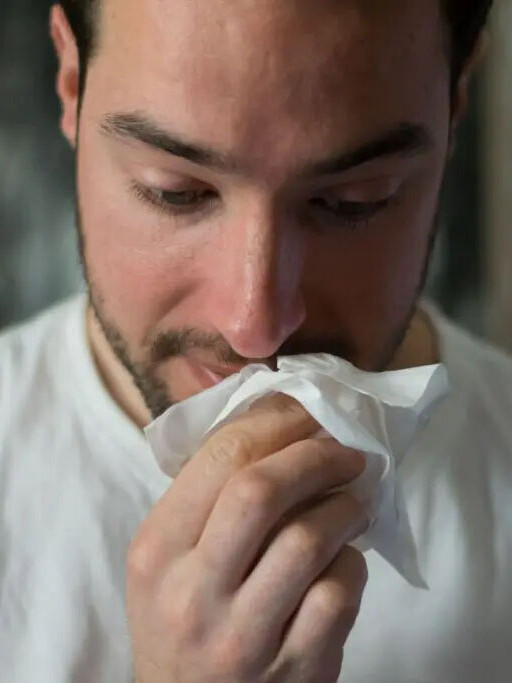
Just because the symptoms are so common, it is difficult to tell if they are from sick building syndrome. It is only when several people in the same building experience these symptoms at the same time that you can speak of sick building syndrome with more certainty.
The causes of sick building syndrome
Sick building syndrome can occur in one particular room, or the entire building can cause you to get sick. Some of the most common causes are poor or lack of ventilation, high humidity due to moisture problems or chemical contamination from building materials, for example. Insufficient daylight can also lead to the health problems described above.
Solving sick building syndrome
The causes of sick building syndrome do not disappear on their own.
Fix dampness in your home for good?
Are you facing a moisture problem? Our field engineers are true experts when it comes to this moisture problem. Contact AquaConsult now for a no-obligation free expertise.
Tackle hay fever with ionization
01/08/2024
Is moisture bad for your health?
26/07/2024
26/07/2024
What is the technical ATG approval?
23/07/2024
What is floor drainage in the basement?
23/07/2024
Four ways to prevent mold in your home
16/07/2024
How can I waterproof my basement again?
16/07/2024
AquaConsult's expertise in the media
23/01/2024
Is black mold dangerous to your health?
22/09/2022
31/08/2021
Suffering from infiltrating moisture?
23/10/2014
Request more information and brochure
Answer the questions below and get more information and our brochure based on them. Would you like to have the cost calculated? Then indicate this clearly in the text field below and we will do the necessary.


Is moisture bad for your health?
Is moisture bad for your health?
Damage to health from humidity: we must avoid it, agree? Every room has a certain humidity level: when it gets too high, it can be harmful to your health. Find out here what impact too high humidity has on your health.
When is there too much moisture in the home?
There is moisture in every room; this is normal. Moreover, a normal room usually has a humidity percentage between 40% and 60%. That is, about half of the air in an indoor space consists of particles of water damp. When the humidity is normal, you won't notice this. It is only when the air feels dry or clammy that the humidity may not be right. And when the humidity is too low or too high, it causes damage to your health.
Causes of too much moisture in the home
Excessive humidity has several types of causes. Some common ones are:
Of course, condensation is normal in the kitchen or bathroom. Ventilation is important here, allowing this moisture to leave. When you do not ventilate enough, excessive humidity is created, which can be harmful to your health.
Penetrating damp and rising damp are not only harmful to your home, but also to your health. You can recognize moisture by, for example mold on your walls. And let's face it, we're talking about mold. These aren't exactly healthy, are they?
What are the harmful effects of excessive humidity?
The direct impact of mold and moisture in the home on your health
Moisture problems and mold in the home can cause various types of physical health complaints, some typical complaints include:
These are all kinds of direct effects of moisture in the home on your health. People with asthma in particular are more likely to suffer from excessive humidity, and people who suffer from rheumatism will also find that their symptoms get worse.

Indirect effects on your health: dust mites and pests
There are also indirect effects due to moisture in the home.
So it is clear that excessive humidity can have negative effects on your immune system. This is because it costs your body a lot of energy to fight off the symptoms mentioned above, weakening your body in general.
Safety first! Have the moisture problem controlled as soon as possible.
The fact that excessive humidity is unhealthy is no longer going to be denied. To avoid these negative consequences, it is important that you take moisture issues seriously and take immediate action. Depending on what is causing the moisture problem , there is always a solution tailored to your needs.
However, since it is not always easy to figure out what is causing the moisture and mold, it is always recommended to have a moisture expert in. This person can determine with certainty what problem you are facing, and will also suggest the most appropriate method. This guarantees that the moisture problem will be fixed once and for all.
Suffering from moisture in your home?
Are you suffering from excessive humidity somewhere in Flanders? Contact Aquaconsult now and our experts will be happy to help you.
Tackle hay fever with ionization
01/08/2024
Is moisture bad for your health?
26/07/2024
26/07/2024
What is the technical ATG approval?
23/07/2024
What is floor drainage in the basement?
23/07/2024
Four ways to prevent mold in your home
16/07/2024
How can I waterproof my basement again?
16/07/2024
AquaConsult's expertise in the media
23/01/2024
Is black mold dangerous to your health?
22/09/2022
31/08/2021
Suffering from infiltrating moisture?
23/10/2014
Request more information and brochure
Answer the questions below and get more information and our brochure based on them. Would you like to have the cost calculated? Then indicate this clearly in the text field below and we will do the necessary.


Why is ventilation important?
Why is ventilation so important?
Our homes are becoming better insulated, which of course is good news for energy consumption, which is steadily decreasing. However, these well-insulated homes also come with a risk: a possible shortage of ventilation. In this article, we will explain why ventilating your home is essential.
Why is ventilating your home important?
More and more contractors are providing central ventilation systems in new construction homes yet this is not always done for every room. An example: basements are often a forgotten place when it comes to ventilation. The result: an increase in humidity and an increased risk of condensation (which in turn can cause mold growth).
Moral of the story: ventilation is important to moisture problems help prevent it. In this article, we explain why ventilation can make a huge difference and what ventilation systems you can all have installed - without losing heat.
Four good reasons to ventilate your home
Were you looking for a reason why ventilation is important? We give you four key reasons.

1. Good air quality
Of course, the most obvious benefit of proper ventilation in the home is high air quality. When air circulates effectively, it automatically optimizes the air quality in the home, which is essential for a healthy indoor environment. This prevents the accumulation of too much CO2, which can otherwise lead to symptoms such as headaches, drowsiness and fatigue.
It is highly recommended to ventilate regularly, especially at venues where many people congregate, to ensure a healthy and fresh living environment.
2. Drainage against moisture problems
An average person produces about 10 liters of water humidity in a day that increases humidity. This is not little, especially if you share the house with several people! This includes all human and non-human activities such as breathing, showering, washing or cooking. Without proper ventilation, that moisture can do nothing but to condense against cold surfaces such as walls or windows. Over time, this can lead to moisture problems such as mold and wetness in the home, with all its consequences.
The ventilation of your home is usually the only method to effectively remove these amounts of moisture from a property. Especially in new homes, which in most cases are well insulated and airtight, well-designed ventilation is crucial to prevent moisture problems with condensation and mold. In other words, controlled ventilation must to keep the air clean and healthy.
3. No more musty smell
It is common knowledge that damp, non-ventilated rooms can smell very musty. This is, of course, a normal consequence of the lack of air circulation. In non-ventilated rooms, everything smells less fresh than in ventilated rooms.
4. Allergic? Then ventilation is definitely a must
Those with allergies such as hay fever or have asthma, know well that fresh air is extremely important. Poor air quality can intensify asthma and some allergies, as well as cause additional symptoms such as headaches or fatigue.
What happens when you don't ventilate your home (enough)?
Several air quality problems can arise in homes where there is little or no ventilation:
So how can you adequately ventilate your home?
Some tips
You can do all sorts of things to properly ventilate your home. We list some of them:
The ultimate tip: a mechanical ventilation system
A good ventilation system helps control the humidity and air pressure in your home automatically. It uses pressure differences and provides regular ventilation without heat loss:

If you have ventilation system C, airtightness is very important for proper air circulation. With ventilation system D, airtightness is mainly important for heat recovery efficiency.
Suffering from moisture in your home?
Are you suffering from condensation moisture somewhere in Flanders? Or are you facing another moisture problem? Contact Aquaconsult now and our experts will be happy to help you.
Tackle hay fever with ionization
01/08/2024
Is moisture bad for your health?
26/07/2024
26/07/2024
What is the technical ATG approval?
23/07/2024
What is floor drainage in the basement?
23/07/2024
Four ways to prevent mold in your home
16/07/2024
How can I waterproof my basement again?
16/07/2024
AquaConsult's expertise in the media
23/01/2024
Is black mold dangerous to your health?
22/09/2022
31/08/2021
Suffering from infiltrating moisture?
23/10/2014
Request more information and brochure
Answer the questions below and get more information and our brochure based on them. Would you like to have the cost calculated? Then indicate this clearly in the text field below and we will do the necessary.


Hydrofuge: protect your facade from moisture
Hydrofuge: protect your facade from moisture
Your facade can suffer significant damage from moisture. An effective method of avoiding potential damage is to have hydrofuge performed. This blog will give you a comprehensive understanding of what hydrofuge entails and how it can protect your facade from the adverse effects of moisture.
What is hydrofuge?
Hydrofuge is a form of facade treatment. This involves applying some kind of treatment or coating to the facade with the aim of making it water repellent. The layer then forms a kind of protection for your facade, preventing penetrating damp or water from a leaking gutter from making its way inside, and consequently avoiding the adverse effects of these moisture problems Hydrofuge thus offers an effective method of providing lasting protection of the facade from external influences.
Hydrophobizing versus impregnating
Commonly used synonyms for hydrofuge or hydrophobizing are facade impregnation or facade waterproofing. However, there is a slight difference between the two terms:
Why it's best to have your facade hydrophobized
What makes considering hydrofuge worthwhile? You see, this facade treatment brings a few benefits:
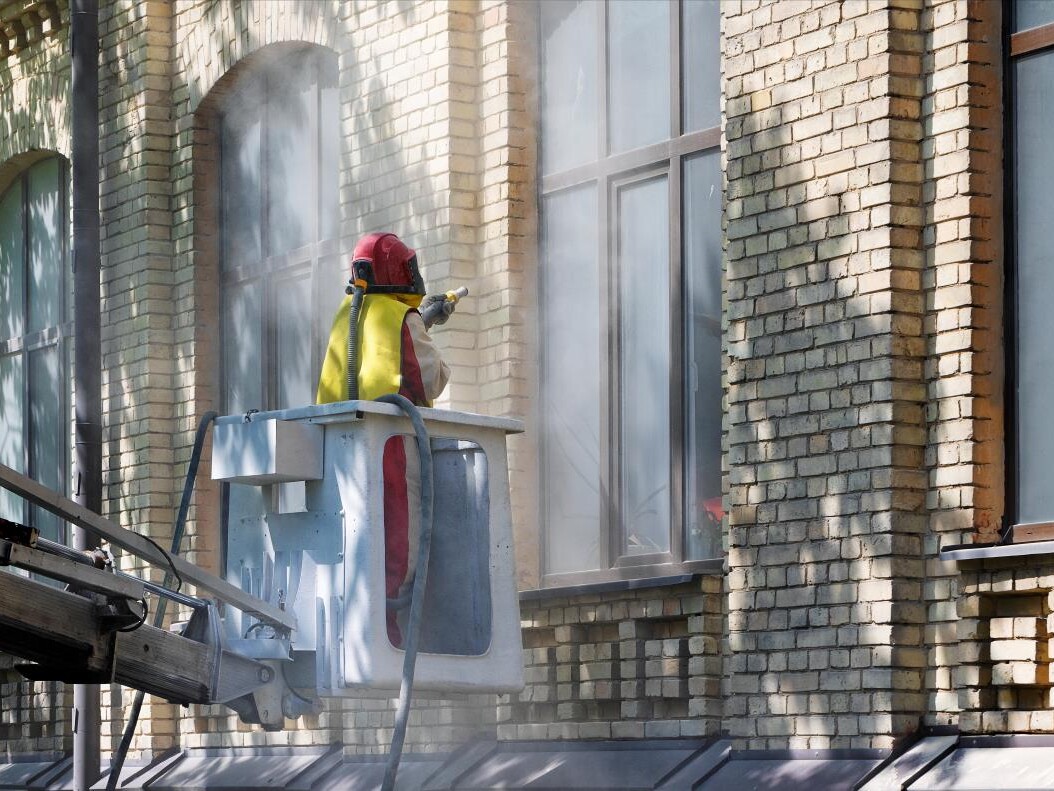
Steps to a water-repellent facade: here's how hydrofuge works
Hydrophobing a facade involves several steps. Typically, a moisture expert proceeds as follows:
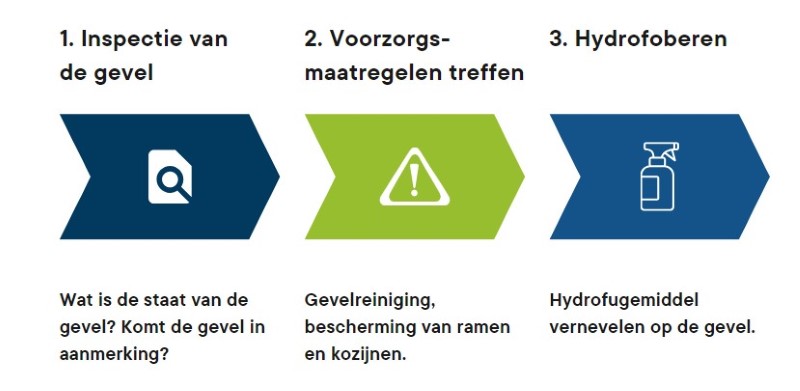
1. Inspection of the facade
The first step is a thorough inspection of the facade. It is essential to assess the current condition of the facade and determine if it is eligible for hydrofuge. During this inspection, any alternatives are also considered. For example, if the moisture expert determines that there is no penetrating moisture but rather rising damp, hydrofuge is not the most appropriate solution. In such cases, a injection of the walls needed. The goal is to choose the most appropriate treatment method and ensure its effectiveness.
2. Taking precautions
Before the hydrofuge process begins, necessary precautions are taken:
These preparatory steps are critical to ensure that the hydrofuge can adhere effectively.
3. Hydrophobing
The application of the hydrofugant is the final step in the process. The product is sprayed over the façade. There are several types of hydrofuge on the market, including both chemical and biological varieties. The chosen hydrofuge then penetrates deep into the pores of the facade, and after drying out, it becomes completely invisible.
This water-repellent layer forms an effective barrier against moisture and other external influences, keeping the facade permanently protected. The result is a facade that is not only water repellent, but also stays clean longer and resists various forms of dirt, such as moss, algae and mold.
What does hydrofuge cost?
It is difficult to set a fixed price for a hydrofuge. In fact, there are many factors that can affect the price tag. Some of these factors include:
We recommend that you hire a professional to hydrofuge your facade. A professional can advise on the condition of the facade and whether a hydrofuge is the appropriate solution. In addition, a specialist is knowledgeable about effective products that provide long-term protection.
Getting rid of moisture?
Do you have a moisture problem, and suspect it could be penetrating moisture? Our field engineers are true experts when it comes to this moisture problem. Contact AquaConsult now for a free, no-obligation expertise.
Tackle hay fever with ionization
01/08/2024
Is moisture bad for your health?
26/07/2024
26/07/2024
What is the technical ATG approval?
23/07/2024
What is floor drainage in the basement?
23/07/2024
Four ways to prevent mold in your home
16/07/2024
How can I waterproof my basement again?
16/07/2024
AquaConsult's expertise in the media
23/01/2024
Is black mold dangerous to your health?
22/09/2022
31/08/2021
Suffering from infiltrating moisture?
23/10/2014
Request more information and brochure
Answer the questions below and get more information and our brochure based on them. Would you like to have the cost calculated? Then indicate this clearly in the text field below and we will do the necessary.


Air-to-air heat pump: cool and heat with ease
Air-to-air heat pump: cool and heat with ease
Are you looking for an efficient way to both heat and cool your home? Then an air-to-air heat pump may be the solution for you. In this article, you'll discover the many advantages, possible disadvantages and how this versatile system works.
What is an air-to-air heat pump?
What is an air-to-air heat pump?
An air-to-air heat pump is a type of heat pump that allows you to both heat and cool your indoor space. So it's similar to a air conditioning system, but with more options. This type of heat pump is mainly known in the form of a monoblock air conditioning system: An air conditioning system in which there is no outdoor unit. It is very popular because of its cost effectiveness and relative simplicity of installation.
How does an air-to-air heat pump work?
How does an air-to-air heat pump work?
When an air-to-air heat pump heats a room, it draws in indoor air using a fan. A compressor located inside the unit compresses the refrigerant gas, raising its temperature. This heated gas then passes through a heat exchanger, transferring the heat to the air. This heated air is blown into the room, and this is repeated until when the room is at the desired temperature. Cooling a room proceeds in just the opposite manner.
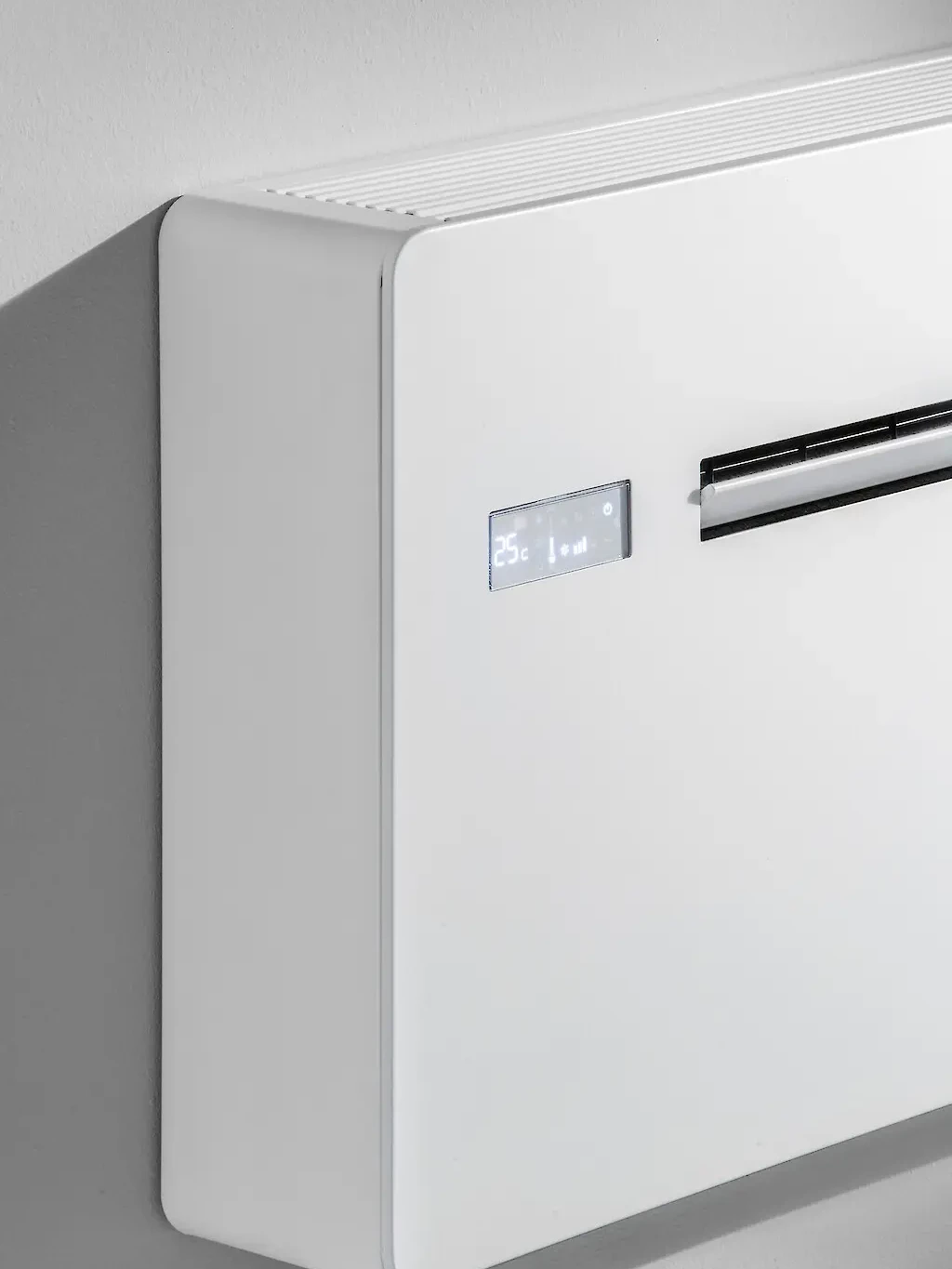
When is an air-to-air heat pump interesting?
An air-to-air heat pump is a convenient system for temperature control, but it is important to know when it is an appropriate choice. Here are some situations when considering an air-to-air heat pump makes sense:
However, there are situations where an air-to-air heat pump is less suitable, such as in poorly insulated homes, large homes that require multiple (indoor) units, and when there is no suitable space for both the indoor and outdoor units. In general, an air-to-air heat pump is best suited as supplemental heating or in smaller, well-insulated homes.
The pros and cons of an air-to-air heat pump without an outdoor unit
There are a lot of advantages to an air-to-air heat pump without an outdoor unit. Here are some of the many advantages:
There are also a few (more limited) drawbacks to mention:
How much does an air-to-air heat pump cost?
Are you considering installing a monoblock air conditioner without an outdoor unit? Then request more free information on price, maintenance, installation, energy consumption and functions for winter and summer. The price depends on the area of the room and the type of installation. Therefore, ask one of our air conditioning specialists for all options without obligation.
Are you considering an air-to-air heat pump?
Are you considering buying an air-to-air heat pump? A wise idea: you'll find the best value for money with this type of air conditioner.
AquaConsult specializes in air conditioners without outdoor units with this air-to-air heat pump technology. For this we work together with our sister company AeroConsult, which specializes in monoblock air conditioners and heat pumps (both air and domestic water). These air-to-air heat pumps can also be coupled with ionizers. This is one of AeroConsult's strengths: we offer the possibility of additional air purification add. Our ionizers remove all impurities from the air, including bacteria, viruses, pollen and particulate matter.
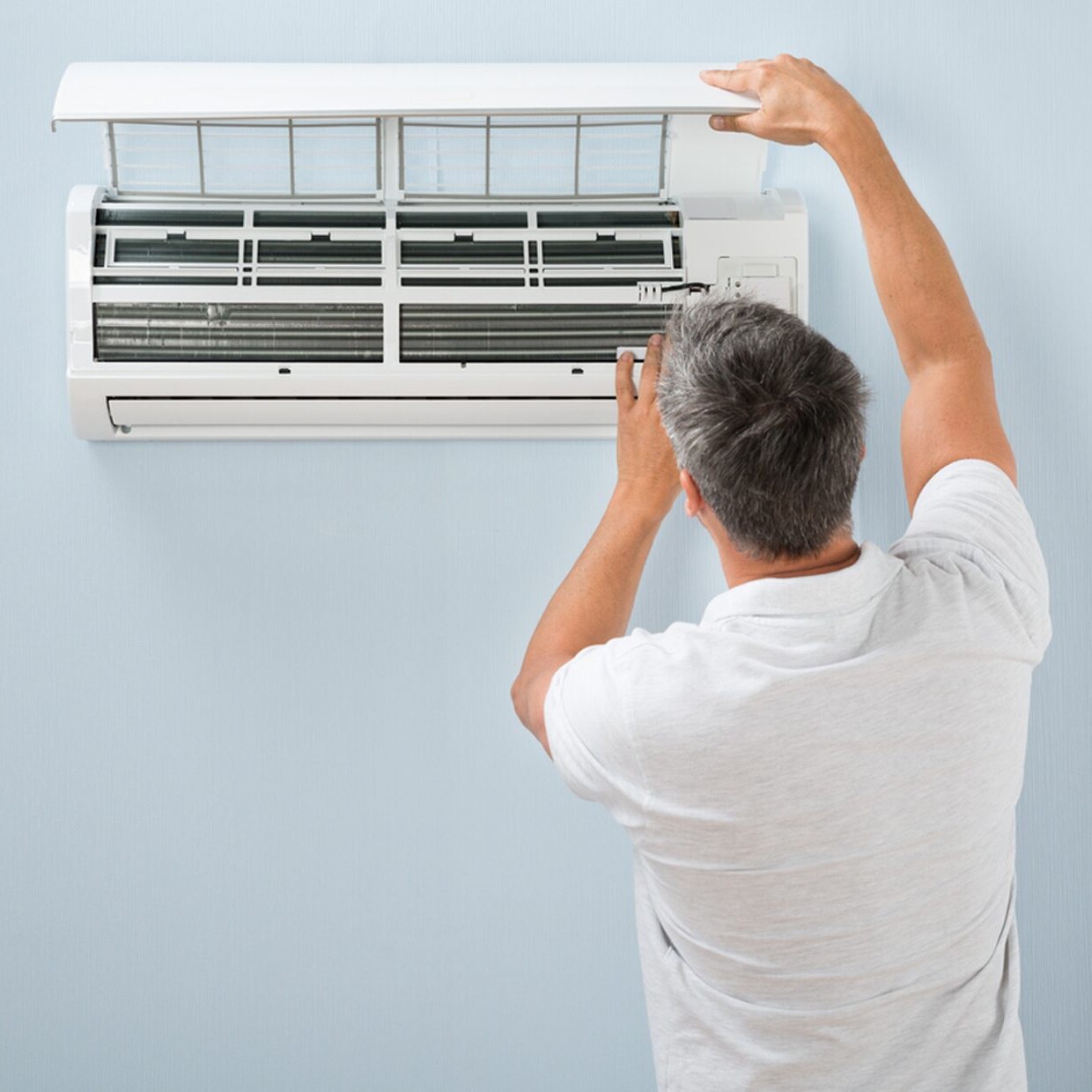
Tackle hay fever with ionization
01/08/2024
Is moisture bad for your health?
26/07/2024
26/07/2024
What is the technical ATG approval?
23/07/2024
What is floor drainage in the basement?
23/07/2024
Four ways to prevent mold in your home
16/07/2024
How can I waterproof my basement again?
16/07/2024
AquaConsult's expertise in the media
23/01/2024
Is black mold dangerous to your health?
22/09/2022
31/08/2021
Suffering from infiltrating moisture?
23/10/2014
Request more information and brochure
Answer the questions below and get more information and our brochure based on them. Would you like to have the cost calculated? Then indicate this clearly in the text field below and we will do the necessary.


Moisture control: don't make these 7 mistakes
Moisture control: don't make these 7 mistakes
A moisture problem often involves more than you think. Then it's tempting to make one of the following 7 mistakes in solving moisture problems. We go over them briefly: here are the 7 most common mistakes in moisture control in the house.
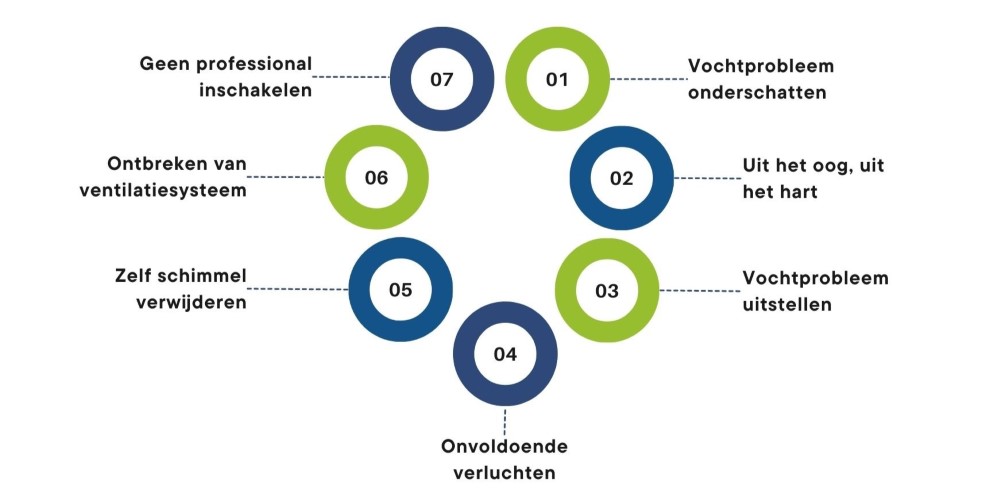
1. Underestimate moisture problems
Moisture problems really should not be underestimated. They often involve much more than just a wet spot on the wall or mold in the home. This, then, is why moisture experts exist. Moisture problems are the cause of a number of other woes. For example, a excessive humidity can be the cause of a lot of health problems; especially if you already have underlying respiratory conditions or suffer from rheumatoid arthritis. It can also trigger allergies in children, the elderly or people with weaker immune systems.
Moisture problems not only cause health problems, but also problems to your home. We give some examples:
In addition to health problems and home damage, moisture problems also increase energy bills. This is because damp rooms are much more difficult to heat. So definitely do not underestimate moisture problems, and get timely moisture control in your home.
2. Having the conviction: out of sight is out of mind
"A damp spot on the wall? A lick of damp-proof paint or a new layer of wallpaper and you won't see it anymore!" This is a reasoning we often hear, but unfortunately this is not a watertight solution.
In fact, this does not equate to effectively solving the moisture problem. Moisture experts are clear and unanimous about this: camouflage is not a solution. You will still face the same problems: structural damage to your home, chances of health problems flaring up. The moisture problems then quietly grow on.
3. Put off fighting moisture in the home
We all know it: we'd rather put off those unpleasant jobs around the house. Yet when it comes to fighting moisture in the home, that's not a good idea. As mentioned earlier, moisture problems can cause a lot of trouble. And the longer you put off the solution, the worse the problem gets and the bigger the works are likely to be.
Notice a damp spot on the wall? If so, please contact AquaConsult immediately and our moisture experts will be happy to help you.
4. Not airing your home on cold days
In winter, we prefer to keep all the cold outside. Yet it's a much better idea to ventilate your home, even when it's freezing outside. Thanks to proper ventilation, you avoid excessive humidity, which can cause problems such as mold ont he wall.
So put your windows at least 10 minutes a day open to avoid moisture problems.
5. Trying to remove mold yourself
Mold - and especially black mold - on the walls is very persistent. If you try to remove large areas of mold yourself, you usually haven't removed everything and it comes back quickly. Also, as a do-it-yourselfer, you cannot address the cause of the mold. In fact, there are a lot of different possible causes:
A moisture expert can determine the exact cause and therefore also apply the most appropriate moisture solution, eliminating the mold completely.
So can you really never remove mold yourself?
Still. If the mold on the wall is not too bad, you can remove it yourself. But then you have to be careful: inhaling mold spores can cause serious health problems, with examples such as respiratory problems, fatigue, nausea, and so on. So be sure to always wear gloves, a mouth mask and protective glasses. Also, removing mold yourself is only possible if it is a few black spots on the wall. Are the spots larger? If so, be sure to call in a moisture expert.
6. Not having a ventilation system in well-insulated houses
A well-insulated home has many benefits. The biggest advantage is the impact on your energy bill. Yet it also has one major disadvantage: there is no air circulation in the house. Without a ventilation system, damp air gets a chance to settle in the walls. That can cause mold or other moisture problems.
With a good ventilation system you don't have that problem. Then the air in the house will be refreshed on a regular basis and moisture will not have a chance to settle in the walls. This also saves yourself the energy of having to fight moisture in your home.
7. Not using an expert in moisture control
A final mistake people make is not calling on a moisture expert. After all, not all moisture problems have the same cause, and each requires its own approach.
An expert can use certain tools to determine exactly what the problem is and exactly what needs to be done to solve the moisture problem. Only then will the correct diagnosis be made and you get exactly the help you need. This is the only way to effectively combat the moisture in your home. In addition, with some solutions you stand a chance of the flemish renovation premium.
Moisture in the house?
Are you suffering from moisture in your home? Then don't delay and request your free expertise. Our moisture experts will be happy to visit you.
Tackle hay fever with ionization
01/08/2024
Is moisture bad for your health?
26/07/2024
26/07/2024
What is the technical ATG approval?
23/07/2024
What is floor drainage in the basement?
23/07/2024
Four ways to prevent mold in your home
16/07/2024
How can I waterproof my basement again?
16/07/2024
AquaConsult's expertise in the media
23/01/2024
Is black mold dangerous to your health?
22/09/2022
31/08/2021
Suffering from infiltrating moisture?
23/10/2014
Request more information and brochure
Answer the questions below and get more information and our brochure based on them. Would you like to have the cost calculated? Then indicate this clearly in the text field below and we will do the necessary.





